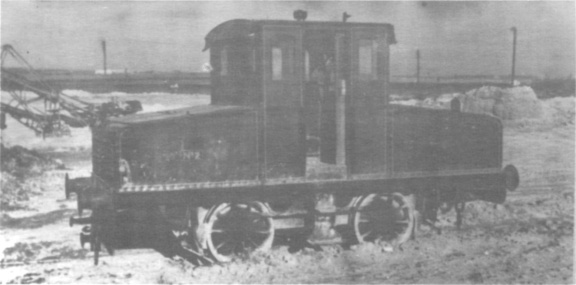
| THE INDUSTRIAL RAILWAY RECORD |
© MARCH 1967 |
AN EARLY BATTERY
LOCOMOTIVE
BRIAN WEBB

In the early 1920Ďs the Newcastle-upon-Tyne firm of R. & W. Hawthorn, Leslie & Co. Ltd., conducted intensive experiments into the field of electric rail traction, using both battery and petrol electric systems as well as the two in combination.
Two locomotives were built and extensively tested at the firmís Forth Banks works. They used the Paragon system of transmission as patented by Capt. W.P. Durtnall who had permitted Hawthorn, Leslie to offer locomotives based on that system.
The machine chosen as the subject here is the 0−4−0 battery electric locomotive built in 1924, works No.3584. It was named WEMBLEY, appearing at the Wembley Exhibition in 1924 and at the North East Coast Exhibition in May 1925. Of standard gauge, it will be noted that its wheels (3ft 3in diameter) are coupled, a most unusual feature in a battery locomotive. As built it had a 96 D.P. Cells storage battery of 240 Amp/Hr. capacity and a New Battery of 336 Amp/Hr. The electrical equipment was designed under Durtnallís patent to act as a generator and replenish the batteries when the locomotive was running on down grades.
The machine was retained at the Forth Bank works and worked as yard shunter from 1937 until sold in March 1939 after overhaul to the Washington Chemical Co. Ltd., Co. Durham. It exchanged its WEMBLEY nameplate for a No.2 plate, and at the same time the works plate was redated 1939. I saw this locomotive at work at Washington in October 1964 and noted that the worksplate has a small extension bearing the words "Durtnallís Patents".